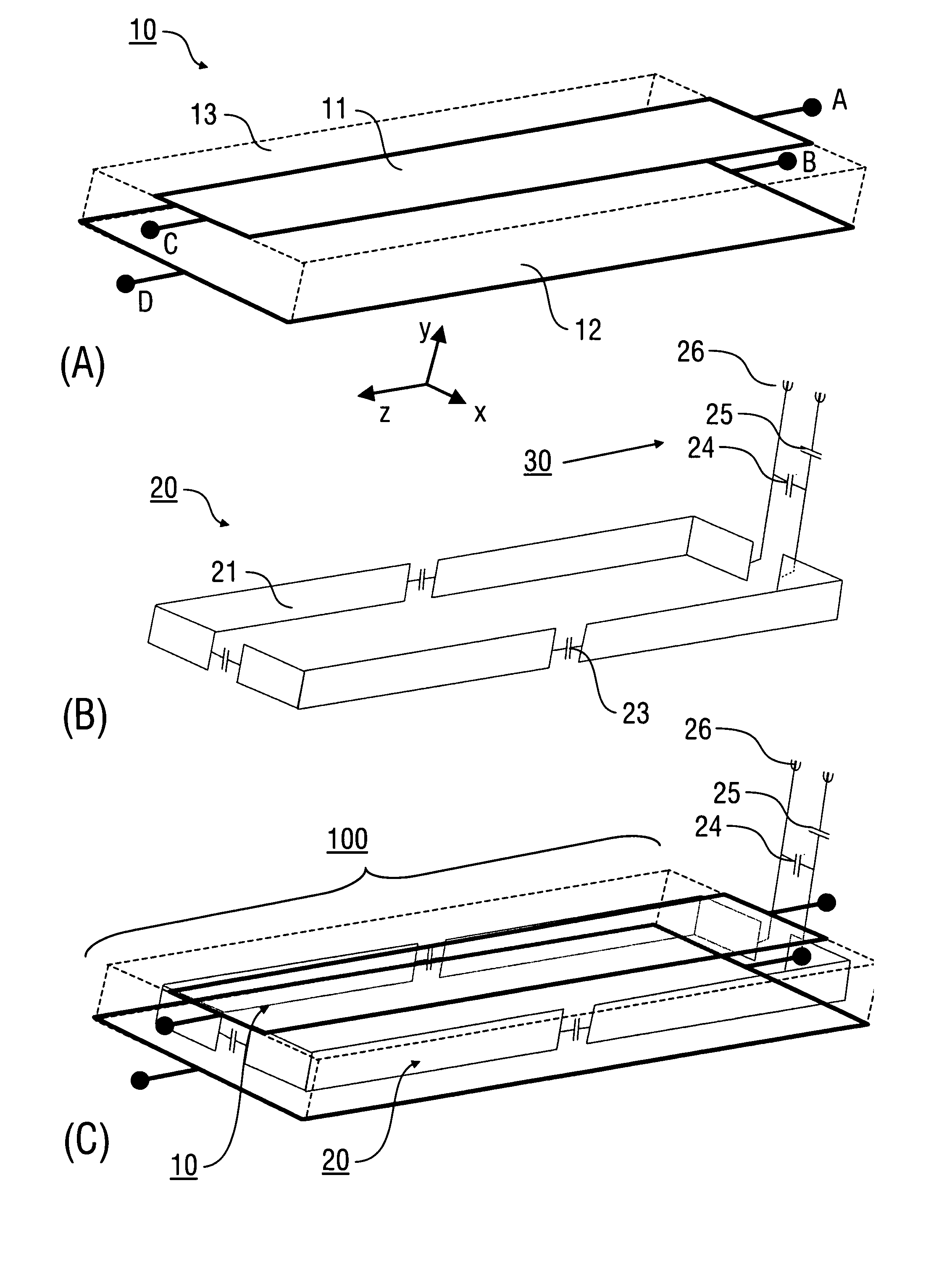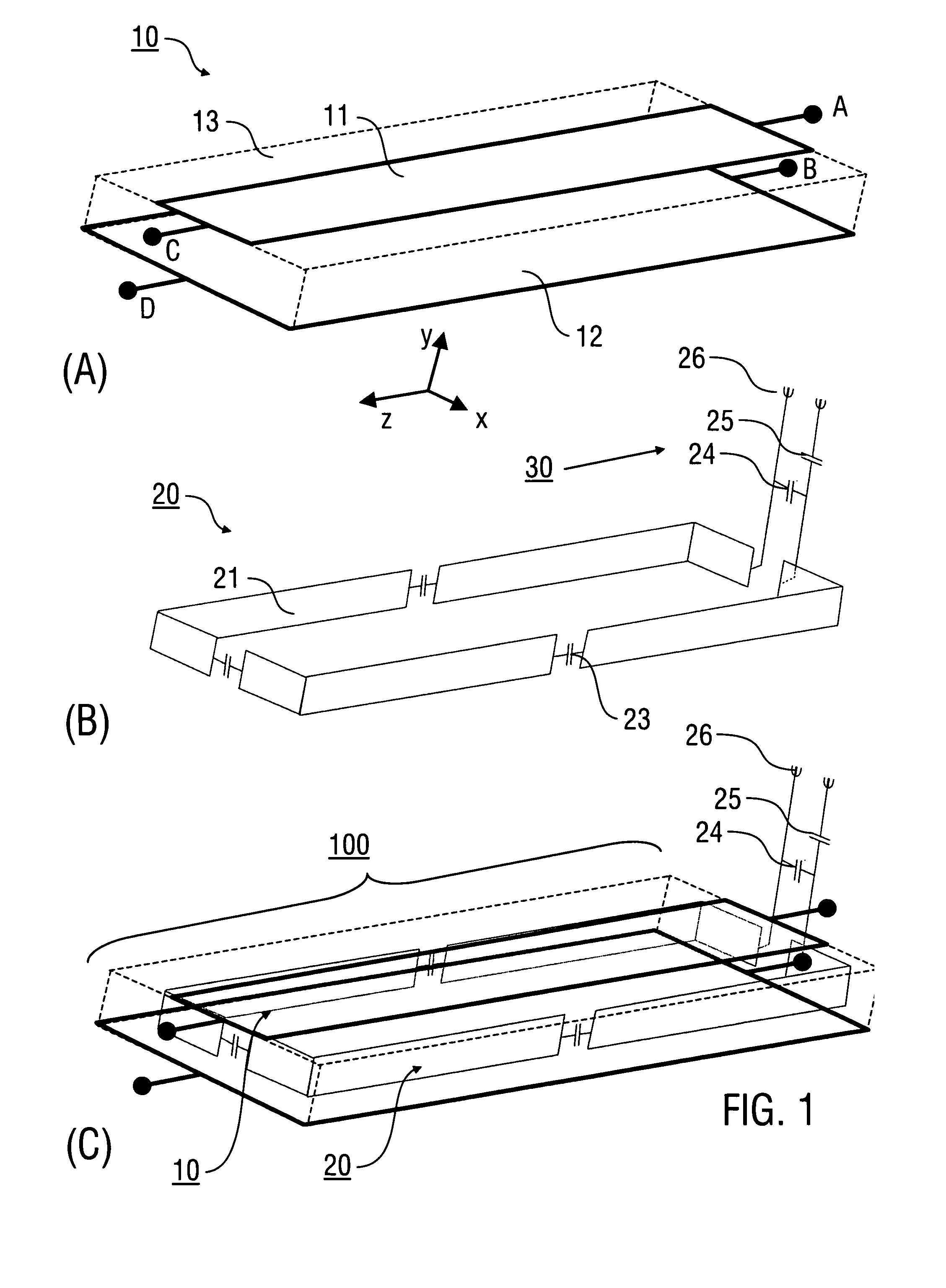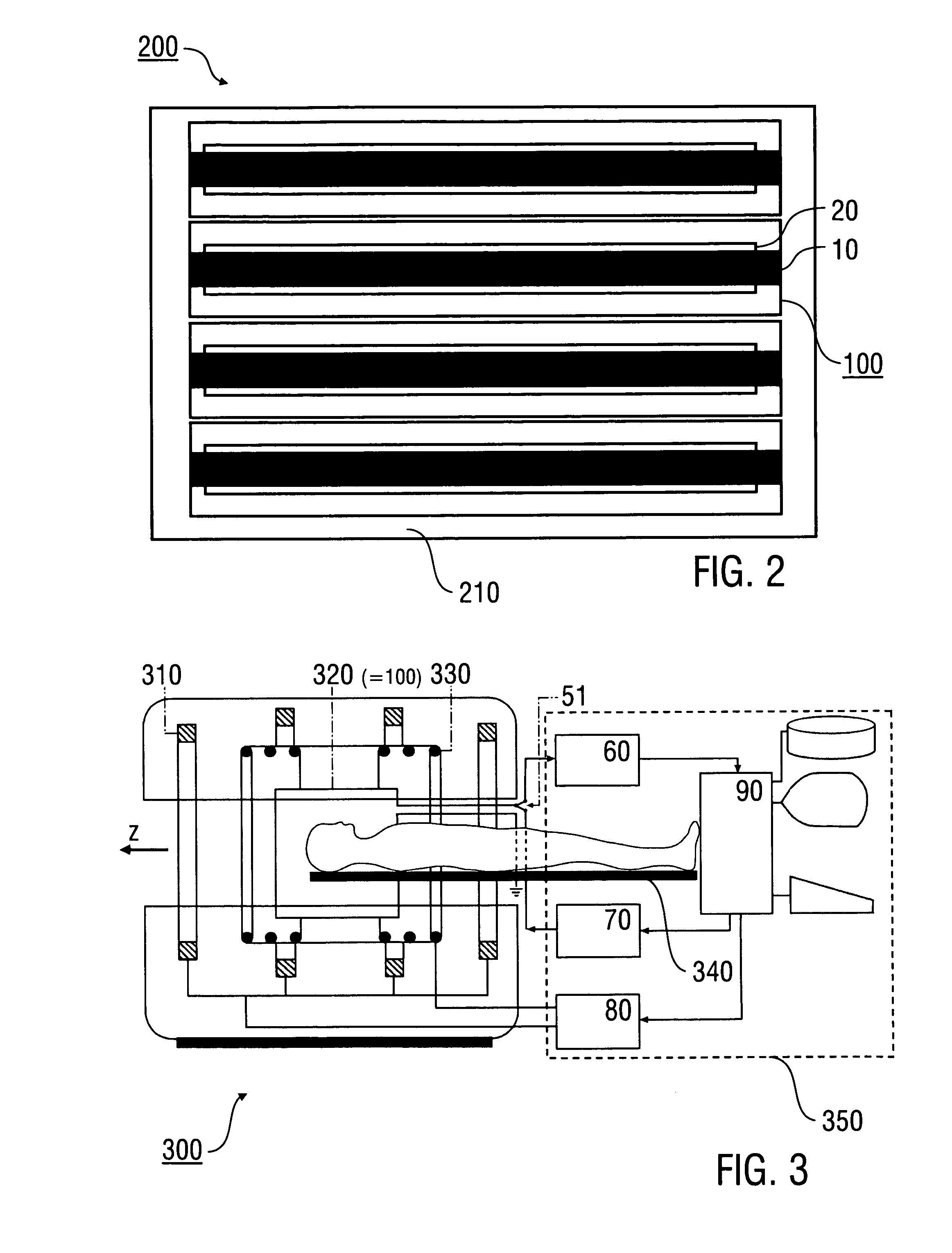Stripline antenna and antenna array for a magnetic resonance device
a magnetic resonance device and antenna array technology, applied in the direction of instruments, magnetic measurements, measurement devices, etc., can solve the problems of deterioration of tuning behavior, reconstruction errors, deterioration of snr, etc., and achieve the effect of advantageously simplifying the antenna structure and high packing density
- Summary
- Abstract
- Description
- Claims
- Application Information
AI Technical Summary
Benefits of technology
Problems solved by technology
Method used
Image
Examples
Embodiment Construction
[0065]Embodiments of the invention are described hereinafter with reference by way of example to antennas, whose conductor loop arrangement comprises at least one rectangular conductor loop having a conductor or conductor portions in the form of a layered strip and / or a bar, e.g. a round bar. The implementation of the invention is not restricted to the illustrated examples, but can be accomplished in a corresponding manner with conductor loop arrangements which comprise differently formed conductor loops and / or conductors having a different cross-section. Furthermore, deviating from the illustration the conductor of the conductor loop arrangement can comprise an angle, which differs from 90°, relative to the strip line resonator. Furthermore, the invention is described hereinafter with reference by way of example to antennas having a strip line resonator, which extend along a planar reference surface (reference plane). Accordingly, the invention can be implemented with curved refere...
PUM
 Login to View More
Login to View More Abstract
Description
Claims
Application Information
 Login to View More
Login to View More - R&D
- Intellectual Property
- Life Sciences
- Materials
- Tech Scout
- Unparalleled Data Quality
- Higher Quality Content
- 60% Fewer Hallucinations
Browse by: Latest US Patents, China's latest patents, Technical Efficacy Thesaurus, Application Domain, Technology Topic, Popular Technical Reports.
© 2025 PatSnap. All rights reserved.Legal|Privacy policy|Modern Slavery Act Transparency Statement|Sitemap|About US| Contact US: help@patsnap.com



